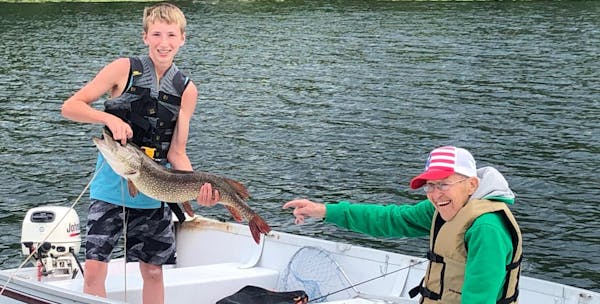Fishing participation in the United States isn't keeping up with population growth, but a recent national survey is showing positive trends for the 11th year in a row.
A report released this week said that nearly 50 million Americans went fishing last year, 300,000 more than in the previous year. That's 16.4% of citizens over age 6.
The gain in raw numbers provided for the highest number of participants since 2007, with positive growth in the numbers of women, youths and adolescents.
"The future of fishing looks bright," said the report from the Outdoor Foundation and Recreational Boating & Fishing Foundation.
Based on 20,000 online interviews conducted this year with people across the United States, the survey once again demonstrated that freshwater fishing is dominant. In 2018, the activity attracted 39 million participants, expanding a group that has grown an average of 1.2% each year since 2016. Freshwater anglers fished the most often — venturing out on a total of 632 million fishing trips with individuals averaging 16.2 days on the water.
The report said saltwater fishing was a distant second in popularity, engaging 4.3% of the U.S. population over age 6, or 12.8 million people. "After years of steady growth, saltwater fishing's participation rate slipped by 1.8 percent from 2017 to 2018," the report said. "Nonetheless, the big picture still indicates growth."
The number of people fishing in saltwater has increased by an average of 2.4% each year since 2016, the report said.
Fly fishing has the smallest following, with around 3 million participants. But the number of people casting flies is increasing at the fastest rate of all three types of fishing. In 2018, the report said, 17.4% of fly-fishing participants were new to the activity. Overall, first-timers accounted for about 6% of the 49.4 million people who fished in 2018.
The survey found that spending time with loved ones is a primary motivation to fish and that 78% of adults who fished in 2018 were introduced to the sport before age 12. That bodes well for the future when you consider the report's finding that children ages 6 to 12 participated in fishing at a rate of 24.1%, a rate that has grown an average of 1.9% each year over the past three years. The growth rate for adolescents fishing has increased even more, the report said.
In 2018, female participation numbers reached an all-time high at 17.7 million.
The report talked about a high "churn rate" in 2018, when 9.1 million people stopped fishing while 9.4 million started. The churn produced a net gain, but the actual rate of participation slipped in comparison to the overall population.
In Minnesota, fishing-license sales through the weekend after July 4th were down 2% from 2018. Total licenses sold were 786,140. That's 10% below the mark set a decade ago, but the sales report shows a 3% year-to-year gain in fishing licenses sold to resident youths. Adolescents aged 16 or 17 bought 23,400 fishing licenses through the weekend after July 4th.
First-round picks could be on the trading block on day 1 of the NFL draft

KAT in early foul trouble, but came back big in second half

Another big Vikings need might not be addressed early in draft

Wild roster 2024-25: Who stays, who goes after playoff failure?

